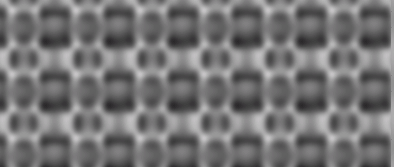Package Exports
- tiling-noise
This package does not declare an exports field, so the exports above have been automatically detected and optimized by JSPM instead. If any package subpath is missing, it is recommended to post an issue to the original package (tiling-noise) to support the "exports" field. If that is not possible, create a JSPM override to customize the exports field for this package.
Readme
Tiling Noise
A tiny library to make seamless tileable noise from any 4D noise function.
Works by mapping coordinates to a Clifford torus, using the method described by JTippetts.
Installation
Use with your favorite 4D noise library
npm i tiling-noiseOr use with one of these
npm i tiling-noise open-simplex-noise
npm i tiling-noise simplex-noise
npm i tiling-noise asm-noiseUsage
Requires a 4d noise function noise4D(x, y, z, w) from a library such as those above
import makeTilingNoise from 'tiling-noise';
// Using open-simplex-noise:
import { makeNoise4D } from 'open-simplex-noise';
const noise4D = makeNoise4D(Date.now());
// Using simplex-noise:
import SimplexNoise from 'simplex-noise';
const simplex = new SimplexNoise();
const noise4D = (x, y, z, w) => simplex.noise4D(x, y, z, w);
// Using asm-noise:
const noise4D = require('asm-noise');
const tilingNoise = makeTilingNoise({
width: tileWidth, // required
height: tileHeight, // required
noise4D: noise4D, // required
// Constant used to stretch circle in torus mapping, uniform or per axis
stretch: 1, // or [xStrech, yStretch, zStretch, wStretch]
// Offset constant in 4D space, uniform or per axis
offset: 0, // or [xOffset, yOffset, zOffset, wOffset]
});
const noise = tilingNoise(x, y);Full example (with open-simplex-noise):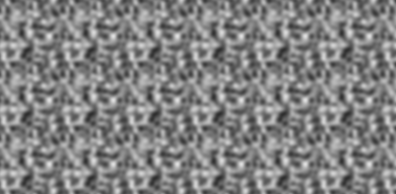
import makeTiling from 'tiling-noise';
import { makeNoise4D } from 'open-simplex-noise';
const [width, height] = [400, 200];
const [tileWidth, tileHeight] = [64, 64];
const noise4D = makeNoise4D(Date.now());
const tilingNoise = makeTiling({
width: tileWidth,
height: tileHeight,
noise4D: noise4D,
stretch: 10,
});
const canvas = document.createElement('canvas');
canvas.width = width;
canvas.height = height;
document.body.appendChild(canvas);
const ctx = canvas.getContext('2d');
const img = ctx.createImageData(width, height);
for (let x = 0; x < width; x++) {
for (let y = 0; y < height; y++) {
const i = 4 * (y * width + x);
const value = (tilingNoise(x, y) + 1) * 128;
img.data[i] = value;
img.data[i + 1] = value;
img.data[i + 2] = value;
img.data[i + 3] = 255;
}
}
ctx.putImageData(img, 0, 0);Offset (& Animation)
Offset animated: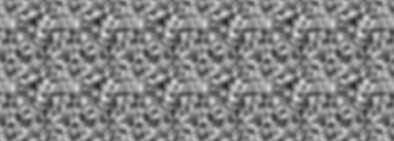
let time = 0;
setInterval(() => {
const tilingNoise = makeTiling({
width: tileWidth,
height: tileHeight,
noise4D: noise4D,
stretch: 10,
offset: 0.1 * time,
});
const img = ctx.createImageData(width, height);
for (let x = 0; x < width; x++) {
for (let y = 0; y < height; y++) {
const i = 4 * (y * width + x);
const value = (tilingNoise(x, y) + 1) * 128;
img.data[i] = value;
img.data[i + 1] = value;
img.data[i + 2] = value;
img.data[i + 3] = 255;
}
}
ctx.putImageData(img, 0, 0);
time++;
}, 100);Effect of switching between incrementing each component of offset in equal time intervals: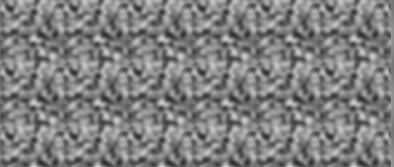
Stretch
stretch: 1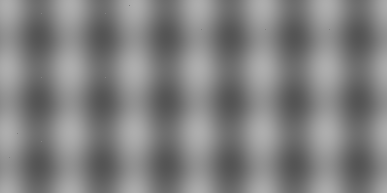
stretch: 10
stretch: 100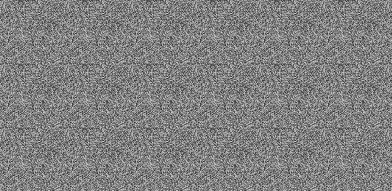
stretch: [10, 1] or stretch: [10, 1, 10, 1]
stretch: [10, 1, 1, 10]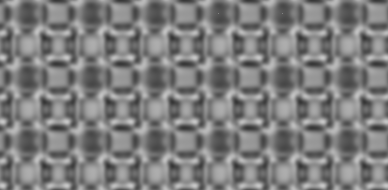
Setting stretch: [time, 1, 1, time]